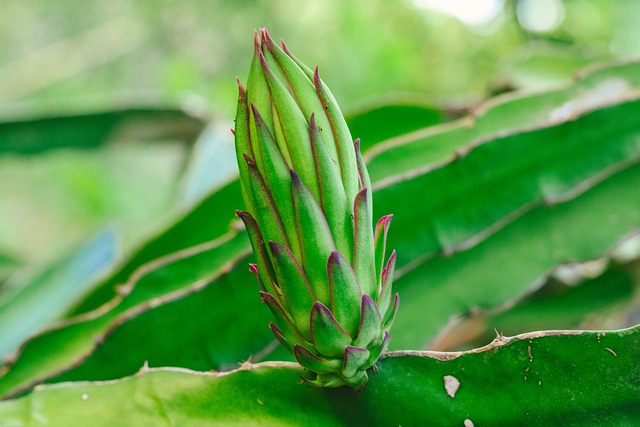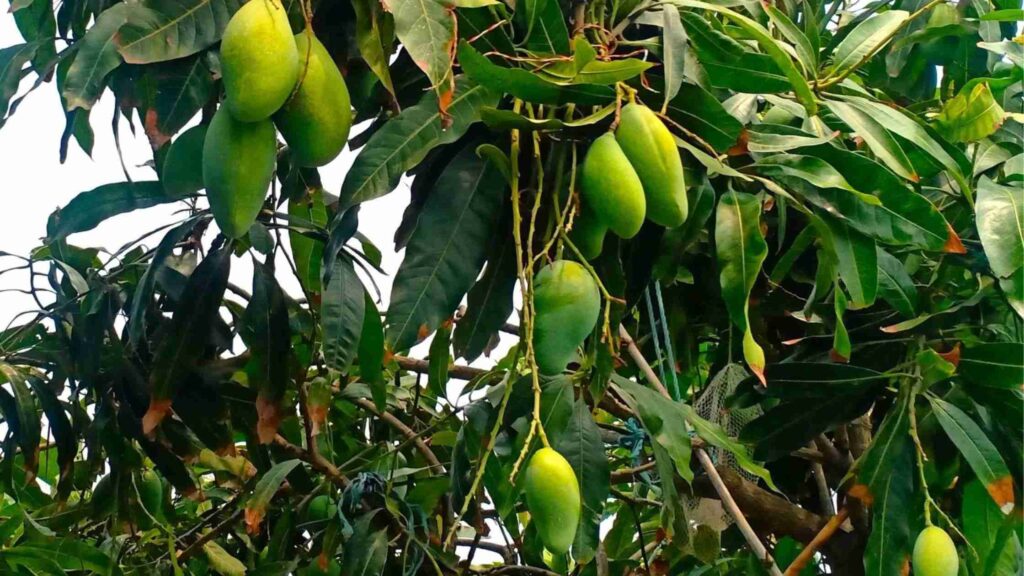I now present how to grow dragon fruit with expert planting, watering, and care tips. Discover how to cultivate this fruit in your garden.
Duration of Planting
Dragon fruit can be found year-round, but their peak season is summertime. Look for brilliant, uniformly colored pink skin when selecting one that is extremely ripe and tasty.
Propagation from Stem Cutting

Dragon fruit propagation is possible either from seed or stem cuttings. Propagation from seed is less reliable and will require patience, as it will take 3 to 5 years for food production. While propagation is more commonly accomplished via be use of steam cuttings will grow rapidly and may produce fruit 7 to 9 months from propagation.
I have cut segments of dragon fruit stems 6 to 10 inches long of old stem sections of the mother dragon fruit plant using a sharp clean tool. Then I placed the cuttings in a cool dry area with good air circulation and out of direct sunlight for 2 to 3 days to cure. Before cut, I have to make sure that the scissors or pruners that were using are perfectly clean. Because dirty tools can spread disease.
Container/Pot Selection for Cutting

After 3 days, I started dragon fruit stem cuttings, took a medium-sized pot, and placed some stones at the bottom for drainage. Then I prepared a soil mix consisting of cow dung compost, vermicompost, kitchen compost, light garden soil, and sand in equal proportions. At the end, I placed the cutting in this soil mix.
I poured the soil mixture into the pot. And I maintained a space between the soil’s surface and the pot’s lip of one to two inches. Then drill a hole in the center that is 2 to 3 inches deep, and then carefully insert the bottom 3-inch portion of the cutting into the hole. To give support, I compacted the dirt surrounding the stem. For optimal growth, I maintained the container in direct sunlight and watered it whenever the soil was fully dry.
Additionally, I cut a dragon fruit in half and removed the seeds to propagate the fruit from the seeds. After separating the seeds, I soaked them in water and then spread them out on paper to dry for two to three days. Equal parts compost, sand, and garden soil should be added to a pot; then, wet the soil mixture. Over the soil’s surface, scatter seeds. To ensure that the seed and soil mix have proper contact, now lightly cover them with the soil mix and gently push the soil with my palm. Propagation from seed is less reliable and will require patience as it will take 3 to 5 years for food production. While cuttings will grow rapidly and may produce fruit within 7 to 9 months from Propagation only.
Transplant the Cuttings

After 60-65 days, I transplanted the cuttings into a bigger pot. I have 2 other cuttings that are 100 days old and these are purple variety plants. Any container can be used to cultivate it with ease. I chose one with a diameter of 18 to 25 inches and a depth of at least 15 to 10 inches for best results. Then I have ensured that it has a drainage hole on its bottom. To prevent soil leaks, I covered the entire area with a small stone; this can allow access water to flow through it. Equal parts of garden soil, compost, and river sand are added to the pot. Using my palm, tapped the dirt to eliminate any potential air spaces. Then carefully remove the plants from their pots. Throughout the process, take care not to disrupt their root balls.
Before planting in the ground, loosen or tease the roots to encourage them to expand out in all directions, forming a strong foundation for the plant as they branch out in the soil. I Dug a hole in the soil area that is 5 inches deep, and then carefully inserted the root ball into the hole. To offer support, I covered it with soil and compacted the soil around the stem. Don’t forget to water your plants after transplanting. It is best to place the new plant in a dry area with some sunlight, even though dragon fruit is a tropical to subtropical plant that requires heat and sunlight.
Support the Cutting Plants
It is a climbing cactus that needs some kind of support to grow on after four days after transplanting. I constructed a support system for plants out of five-foot bamboo poles to provide that support. Jute rope have been used to tie the bamboo stick. This can assist them in realizing their greatest potential without depressing and burdening them. These plants will resemble this one after a year if you continue to keep them in full sun.
Fertilizing the Plant
However, when it comes to fertilizers be wary that too much fertilizer can easily kill your plant. For best results, I fed them a little slow-time release, low-nitrogen cactus fertilizer, and used cattle dung vermicompost once every 45 days.
As the name “night-blooming cereus” indicates. Dragon pitaya only blooms at night, opening in the evening and lasting until mid-morning the next day. Flowers only bloom for one night and peak time is from 1:00 a.m. to 3:00 a.m.
Pollination of the Cuttings Plant

If a variety doesn’t self-pollinate, you can try hand pollination. Many types do. I gathered pollen from the flower’s male anther and placed it on the stigma of the female portion. Though usually just the fruit is consumed, the fruit and the blossoms are edible. For best results, I repeated the procedure two or three times. Blossoms are about a foot long, 7 to 9 inches broad, bell-shaped, and have a yellowish-green color. They are quite fragrant. Summer is when the fruit that results is produced as a tropical to subtropical plant, dragon fruit needs both heat and sun to thrive well.
Harvesting the Fruit

When the skin turns red or yellow after 210 days, the dragon fruit is ripe. based on the type. Squeezing the skin will also feel somewhat soft, but not mushy. Till the fruit breaks, twist it. Let’s gather the produce.



